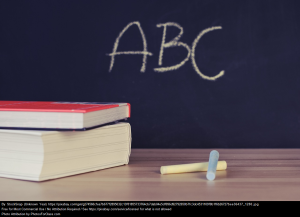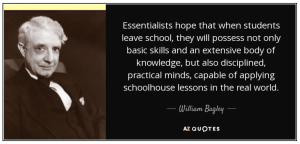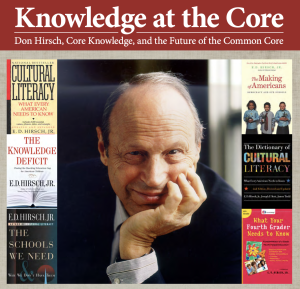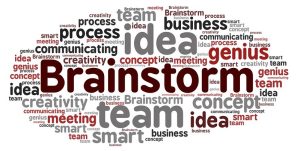8 Chapter 8: Essentialism
Dr. Della Perez
Essentialism

The educational philosophy that will be examined in this chapter is Essentialism. This is a teacher- centered educational philosophy that emphasizes learning skills through traditional subjects like reading, writing, math, and science. In the classroom, Essentialists value a focus on these core subjects over a wider array of subjects, as they believe students are able to gain deeper knowledge when exposed to fewer core subjects.
To better understand the foundation of Essentialism, this chapter will begin with an overview of the key characteristics of Essentialism. Information related to how this philosophy of education approaches the curriculum and what it believes about instructional methods will also be presented. Within this presentation, a discussion of the role of the teacher and role of the learner will be discussed. Finally, key proponents of Essentialism and their contributions to this philosophy of education will be presented.
Characteristics of Essentialism
8.1 Essential Questions
By the end of this section, the following Essential Questions will be answered:
- What are the philosophical foundations of Essentialism?
- What are three basic principles of Essentialism?
- What would be an example of the Essentialist philosophy in practice?
Pulling from the philosophies of idealism and realism, the Essentialist philosophy is focused on bring education back to its most essential points. Essentialism began in the 1930s as a result of the “perceived decline of intellectual rigor and moral standards in the schools” (Webb et. al., 2010, p. 80).
Essentialist believed it was important to increase the educational standards in American Education so that we could compete with countries like Japan and Germany. When our students were compared to students in countries like Japan and Germany in the 1930s, our students were not as academically competent as their counterparts. Essentialist believed this had a lot to do with the watered down nature of the American curriculum. Therefore, Essentialist proposed a teacher-centered approach to teaching and learning. When translated into practice, the teacher is the one who takes primary responsibility for organizing the classroom, curriculum, instruction, and assessment.
According to Johnson et. al. (2011), the three basic principles of Essentialism are:
1) a core of information,
2) hard work and mental discipline, and
3) teacher-centered instruction.
An example of these principles in practice would be in the “back-to-the-basics” movement that took place in the 1970’s. This movement also emphasized:
- Holding teachers accountable for student learning.
- Providing instruction geared toward organized learning through textbooks.
- Teaching methods that center on regular assignments, homework, recitations, and testing.
After mastering these principles and basic disciplines, advocates of this movement claimed that students could use the knowledge they gained to solve personal, social, and civic problems. In other words, they would have the skills they would need to become civilized members of society.
8.2 A Closer Look
The following video clip provides an historical overview of the Essentialist philosophy. As you are watching the clip, please think about some of the key characteristics you have learned about Essentialism in this section. While you are watching the video, please use to the following Questions to Consider as a guide to pull out key points presented about Essentialism.
- Who is seen as the authority in Essentialism, the teacher or the student? Why is this important?
- What do they focus on teaching in an Essentialist classroom? Why?
- What are some characteristics that would describe the Essentialist teacher?
- What are some characteristics that would describe the Essentialist classroom?
- What are some characteristics that would describe the Essentialist student?
Curriculum
8.3 Essential Questions
By the end of this section, the following Essential Questions will be answered:
- What is the focus of the curriculum in a Essentialist classroom?
- How does an Essentialist curriculum differ based upon the grade-level of the student?
- Do you think the focus of this curriculum is beneficial for students? Why or why not?
The Essentialist philosophy is rooted in the belief that their is a common core or knowledge base that all students should learn. According to Webb et. al. (2010), this “essential” knowledge base was broken down into the following content knowledge grade-levels, to ensure that students mastered the skills and subjects they need to learn to be successful and productive members of American society:

-
-
-
-
-
- Primary Level:
Reading, writing, and mathematics.
- Primary Level:
-
-
-
-

-
-
-
-
-
- Upper Elementary Grades:
Reading, writing, and mathematics,
history, geography, natural science,
and foreign languages.
- Upper Elementary Grades:
-
-
-
-

-
-
-
-
-
- Secondary Level:
4 yrs. of English, 3 yrs. of mathematics,
3 yrs. of science, 3 yrs. of social studies,
and a half year of computer science.
College-Bound Students - College-Bound Students:
All secondary level courses plus foreign
language courses.
- Secondary Level:
-
-
-
-
As demonstrated by these examples, the curriculum within an Essentialist classroom is focused on teaching core content. Subjects outside of these areas are
perceived to weaken academic rigor and thought to destroy schools.
Johnson et. al. (2011) found that Essentialism “assigns the schools the task of conserving the heritage and transmitting knowledge of the physical world” (p. 110). The emphasis on conserving heritage is particularly important, for it demonstrates the value this philosophy places on individual students existing cultural backgrounds.
8.4 A Closer Look
For more information about the Essentialist curriculum, please watch the following video clip. To support your comprehension of this video clip, please review the Questions to Consider before watching the video.
- What is the common core?
- What is cultural heritage and why do Essentialist believe it is important?
- Does curriculum change slowly or quickly according to Essentialists? Please provide an example.
- Who are some of the key proponents of Essentialism?
Instruction in the Classroom
8.5 Essential Questions
At the end of this section, the following Essential Questions will be answered:
- What are the main methods of instruction in an Essentialist classroom?
- What is the teachers role in the classroom?
- What is the students role in the classroom?
- What strategies do students use in Essentialist classrooms?
Given the emphasis on teaching the core curriculum, traditional instructional strategies are used in the Essentialist classroom. Examples of some of these instructional strategies include:
- Lecture
- Recitation
- Discussion
- Socratic dialogues
- Written communication
- Oral communication
- Examination (Webb et. al., 2010)
Additional materials used by the teacher to promote the effective delivery of instruction include traditional textbooks, reading books and technology.
Essentialist teachers approach instruction with very specific objectives in mind. This information is usually shared with students in the form of a detailed syllabi or class objectives. Because “activities that require mastering facts and information about the physical world are a significant aspect of Essentialist methodology,” (Johnson et. all, 2011) instruction may also include:
- Field trips

- Laboratories
- Audiovisuals materials, and
- Nature Study.
All of these instructional strategies promote students understanding of the core knowledge Essentialists have determined to be most important for an educated person to have.

- What do you think of the instructional strategies used in the Essentialist classroom?
- What are two instructional strategies you are the most effective for students and two instructional strategies you think are the least effective for students? Explain your answers.
Teachers Role
Essentialism is a teacher-centered philosophy of education. The Essentialist teacher would have a major in the liberal arts, sciences, or humanities rather than educational pedagogy so that they can provide more competent instruction to the students (Webb et. al., 2010). By having a specific specialization, Essentialists believe that the Essentialist teacher is going to be more technically skilled in their field so they can advance students learning.
One key roles of the Essentialist teacher is to set the character of the environment in which learning takes place. This means that the teacher not only needs to consider the content being taught, but the environment in which it is being taught as well.

If you were an essentialist teacher, how would you set the character of your learning environment (give 2-3 specific examples)?
Students Role
Essentialism developed because people believed American students were not keeping up with academic rigor of their counterparts in other countries like Japan and Germany. Consequently, Essentialist believe that students should attend school to gain the knowledge and skills they need to successfully participate in a democratic and technological society (Webb et. al., 2010).
As part of their schooling, students undergo rigorous academic instruction in core content areas. They are also coached on how to be “culturally literate and to develop disciplined minds” (Webb et. al., 2010, p. 81). The concept of cultural literacy was developed by E.D. Hirsch Jr. and it is based on the idea that there are a specific names, dates, facts and concepts from the field of art, religion, science and culture that a person must know to be considered educated (Webb et. al., 2010).
Please take a moment to reflect on the following guided questions to process the information you have learned about students roles in the Essentialist classroom.

- Do you believe every students will gain the knowledge and skills they need to be a productive citizen of society if they are exposed only to the core curriculum provided in the Essentialist classroom? Why of why not?
- How important do you think it is to become a “productive” citizen of society?
- What do you think is most important for students to become and why?
Key Proponents
8.6 Essential Questions
By the end of this section, the following Essential Questions will be answered:
- Who were the key proponents of Essentialism?
- What impact did each of the key proponents of Essentialism have on this philosophy of education?
The Essentialist philosophy of education emerged in the 1930s, however, it was probably most popular in the twentieth century (Webb et. al., 2010). Key philosophers who influenced the development of Essentialism were William C. Bagley, E.D. Hirsch Jr., and Dr. Theodore Sizer.
In this section, a brief overview of each of these philosophers and their contributions to Essentialism will be presented. As you read about each one and the information presented on their contributions, please reflect on the similarities and differences among them. Specifically, see if you can identify any overarching themes between them and any of the other researchers you have learned about.
William C. Bagley (1874 – 1946)
William C. Bagley
was an education
reformist known
for pioneering
Essentialism in
America in 1938.
 His publication, the
Essentialist’s
Platform, called for a strong, common
core curriculum to
help America’s school systems compete with higher-ranking countries (Bagley, 1938).
His publication, the
Essentialist’s
Platform, called for a strong, common
core curriculum to
help America’s school systems compete with higher-ranking countries (Bagley, 1938).
Bagley believed that the influx of immigrants was one of the primary reasons for the weakening of the American culture and school system, so his response to this threat was to raise the academic standards required within the school system.
In the Essentialist’s Platform, the following three main components of essentialism were identified:
1. Students had to be taught by an Essentialist teacher who was well-educated and knowledgeable in the core curriculum.
2. The customs of the American culture were to be promoted to each student regardless of the school they were attending, so that schools of varying demographics had a common foundation.
3. All students had to be held to a higher standard on the “essentials” and if they did not pass the standardized test for each level, they would not be promoted to the next grade. (Bagley, 1938)

- Do you think Bagley was right to be concerned about the educational system in America during the 1930s?
- If there was a decline in the performance of our students, who/what do you think was to blame? Was it really just the influx of immigrants?
- What do you think of the three main components of Essentialism identified by Bagley? How effective do you think they were?
E. D. Hirsch Jr. (1928 – )
E. D. Hirsch Jr. is the chairman and founder of the Core Knowledge Foundation and a current Essentialist advocate. In his 1987 best-seller, Cultural Literacy: What Every American Needs to Know, Hirsch claimed that there was a cultural literacy or baseline knowledge that every person should have in order to be a productive citizen.

As defined in section three, Hirsch believed that a person was only culturally literate when they could identify 5,000 specific names, dates, facts and concepts from the field of art, religion, science and culture that a person (Webb et. al., 2010). His argument for culturally literacy was so provocative that his book became a manifesto for the back-to-the-basics movement (Webb et. al., 2010).
8.7 A Closer Look
For a more in-depth look at E.D. Hirsch and his beliefs about education, please read the attached article. As you are reading, please think about the following questions to consider:
- What are Hirsch’s main arguments in the section titled: Sustaining the American Experiment?
- What did you learn from the section titled: Romancing the Child: Curing American Education of its Enduring Belief that Learning Is Natural?
- Why is Hirsch for the Common Core (see section titled: Why I’m for the Common Core)?
After cultural literacy, Hirsch went on to develop the Core Knowledge curriculum. This curriculum offered the same academic credit to students in more than 1,000 Core Knowledge schools nationwide.
8.8 A Closer Look
For more information about Hirsch and the various programs he has implemented and is currently offering, please click on the link below.
Core Knowledge Foundation [https]
Based on the information you read in this section and your review of the website, please respond to the following Questions to Consider.
- What do you think of Hirsch’s cultural literacy baseline?
- Do you agree with the concept of the Core Knowledge curriculum? Why or why not?
- What other “movements” going on in education today does Hirsch’s work remind you of and why?
Dr. Theodore Sizer
Dr. Theodore Sizer developed the school reform movement known as the Essential Schools movement. Sizer (2004) believed that students needed to master a common core of information and skills. What makes his approach unique is that he does not tell schools what this core information is, instead he asked schools to identify what they consider to be the core elements of their curriculum and then restructure their curriculum to focus on this core.
To help schools meet the vision of the Coalition of Essential Schools (to engage students in in-depth and rigorous learning) the following ten common principles have been developed by Dr. Sizer and the essential school participants:
- Learning to use one’s mind well
- Less is more: depth over coverage
- Goals apply to all students
- Personalization
- Student-as-worker, teacher-as-coach
- Demonstration of mastery
- A tone of decency and trust
- Commitment to the entire school
- Resources dedicated to teaching and learning
- Democracy and equity
8.9 A Closer Look
The following video shows and example of the Coalition of Essential Schools in practice. Please take a moment to watch it and then respond to the Question to Consider.
- How is the Coalition of Essential Schools (CES) taking a new approach to education?
- How do you think CES is inspiring teachers?
- How do you think CES is inspiring students?
- Do you think this is a valid educational model? Why or why not?
- How does it reflect what you have learned about essentialism?

Reflect on your learnings about Essentialism. Come up with one “real-world” example of your own that illustrates essentialism being applied in practice in an educational setting.
Once you find your example:
- Make a copy of it and/or have the complete APA citation for it AND,
- Write a one paragraph summary (5-6 sentences) that states why/how it is an example of essentialism.
Acceptable examples of a “real-world” example in practice of essentialism include: a newspaper article or story, a journal article or book, or a YouTube clip.
References
Bagley, W. C. (1938, April). An Essentialist platform for the advancement of American education. Educational Administration and Supervision, XXIV, 241-256.
Johnson, J. A., Musial, D, Hall, G. E., and Gollnick, D. M. (2011). Foundations of American Education: Perspectives on Education in a Changing World (15th Edition). Pearson.
Webb, L. D., Metha, A., & Jordan, K. F. (2010). Foundations of American Education. Pearson Merrill.
